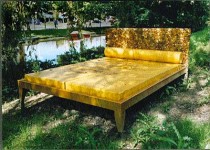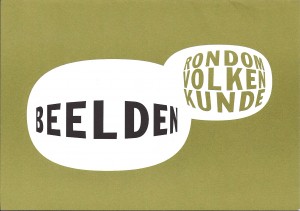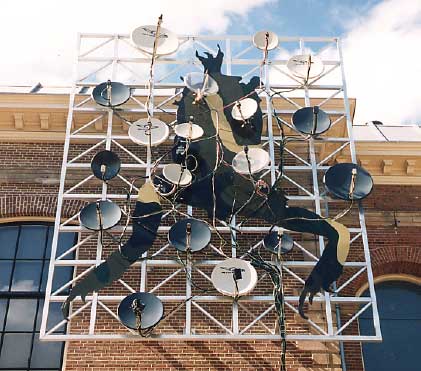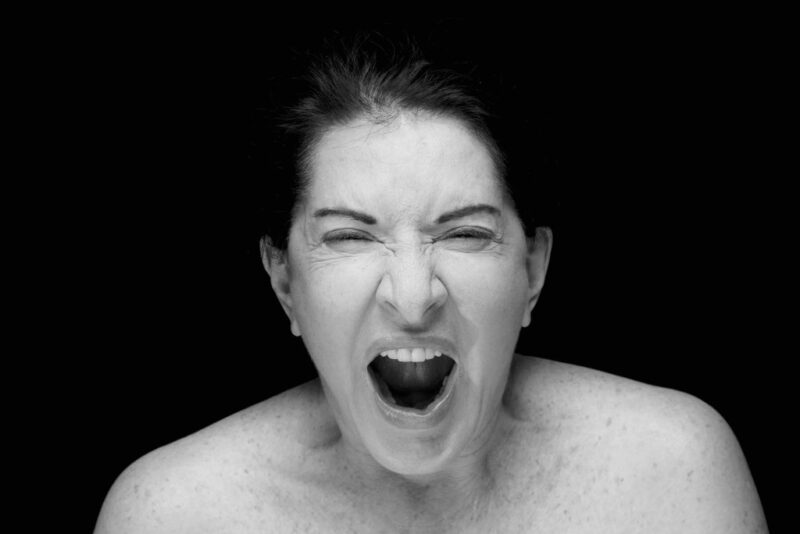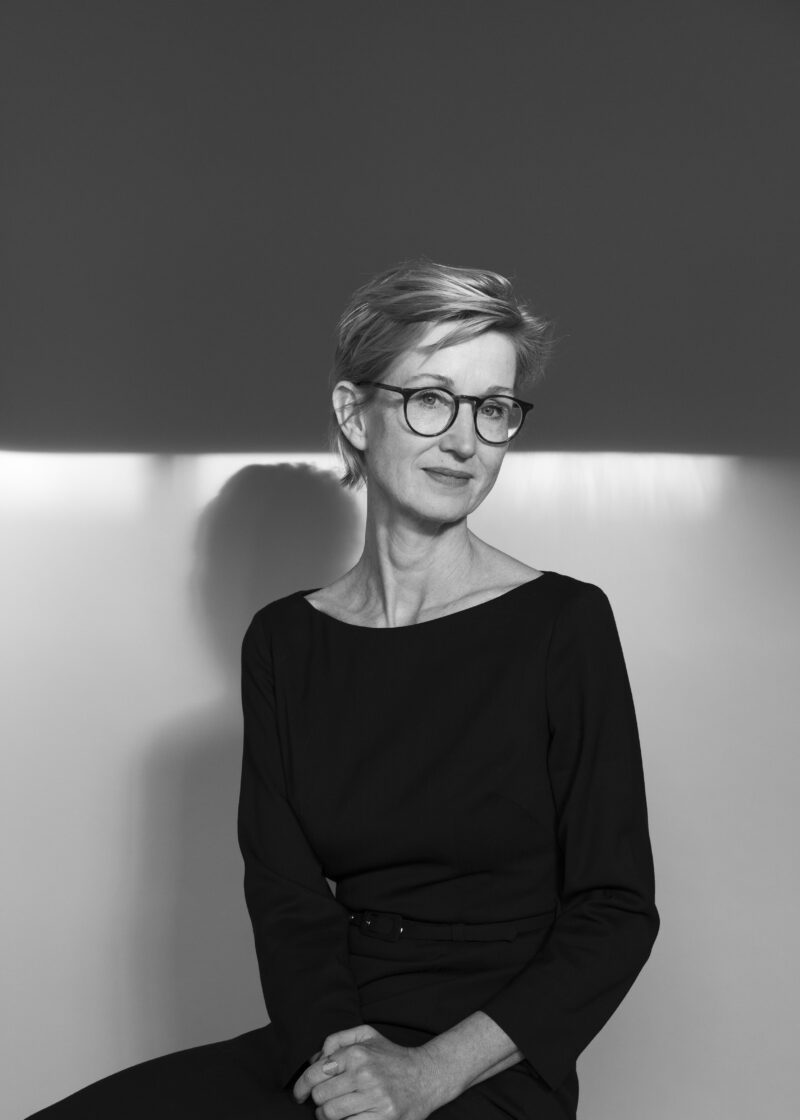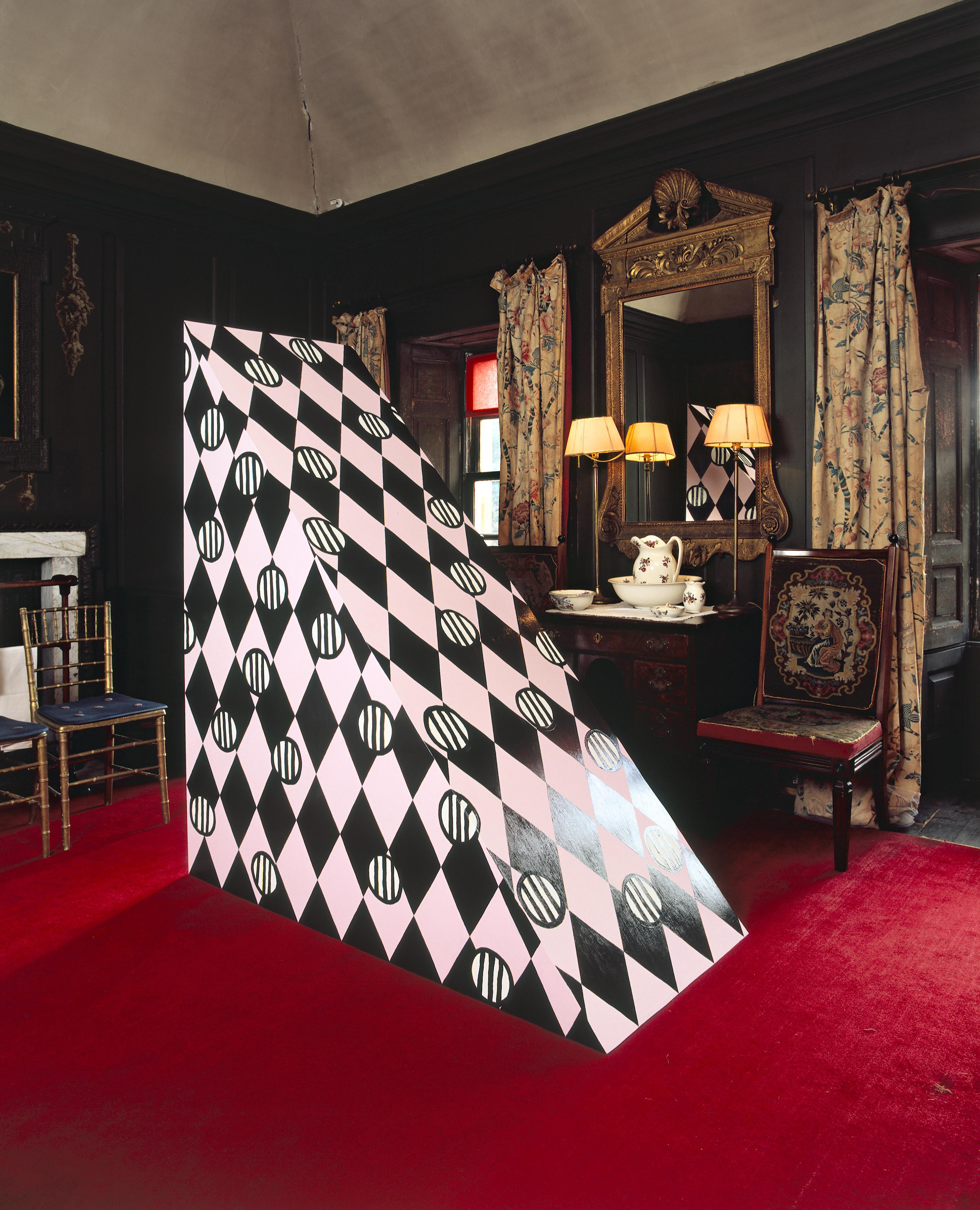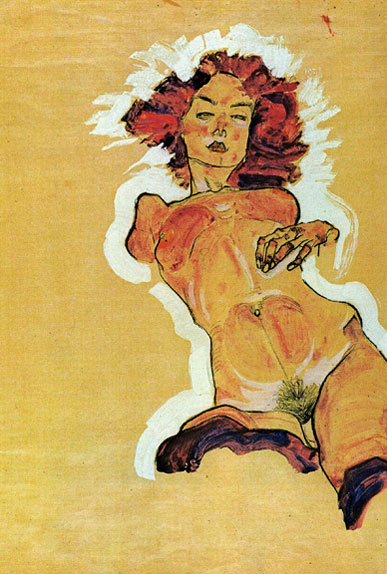Starting in 1997, the National Museum of Ethnology (NME) in Leiden embarked on a large remodelling project that was completed in 2001. An important part of the project was the transformation of the surrounding grounds of the museum into a public park for which 10 contemporary works were commissioned. The motivation behind this art project, entitled Beelden rondom Volkenkunde, was to have artists take a critical look at the function of the museum from a contemporary point of view.
As a first stage in the run-up to the project I proposed to organize an international seminar and invite 14 artists, who have shown their involvement in problems of cultural interaction, to discuss their positions and to talk about their work. The artists were joined by cultural philosophers, art historians, writers and staff of the museum. The purpose of the seminar was to further enhance the discourse on the meaning of cultural representation and the role the NME may have in this. The seminar took place on 26 and 27 June 1999.
List of Artists
1. Andries Botha (1952 (South Africa), lives in Glenwood, South Africa)
2. Janet Cardiff (1957 (Canada), lives in Lethbridge, Canada)
3. Meschac Gaba (1961 (Benin), lives in Amsterdam, The Netherlands)
4. Renée Green (1959 (USA), lives in New York, USA)
5. Jens Haaning (1965 (Danmark), lives in Copenhagen, Danmark)
6. Mona Hatoum (1952 (Lebanon), lives in London, Great Britain)
7. Remy Jungerman (1959 (Surinam), lives in Amsterdam, The Netherlands)
8. Moshekwa Langa (1975 (South Africa) , lives in Amsterdam, The Netherlands)
9. Ken Lum (1956 (Canada), lives in Vancouver, Canada)
10. Cildo Meireles (1948 (Brazil), ;lives in Rio de Janeiro, Brazil)
11. Shirin Neshat (1957 (Iran), lives in New York, USA)
12. Moniek Toebosch (1948 (The Netherlands), lives in La Dalle, Belgium)
13. Roy Villevoye (1962 (The Netherlands), lives in Amsterdam, The Netherlands)
14. Yukinori Yanagi (1959 (Japan), lives in Okayama, Japan and New York, USA)
15. Chen Zhen (1955 (China), lives in Paris, France)
Meschac Gaba (1961, Benin) made a gilded metal bed with a collection of coins from around the world at its head. Gaba’s golden bed was made in memory of the anonymous artists who are represented by their works in the museum collection.
Remy Jungerman’s (1959, Surinam) installation consists of two elements: a camouflage-coloured path that has been padded down through use and a group of satellite dishes with complex wiring that disappears into the museum building. The path, a recurring metaphor in Jungerman’s work, stands for the risks that individuals are faced with when they migrate, move to build a new existence. The dishes are a symbol of communications methods that those who are dislocated from home use to find a place in their new society.
Programme Seminar
Hosts:
Steven Engelsman (Director NME)
Okwui Enwezor (Artistic Director Documenta XI 2002)
Sat 26 June 1999
10.00-13.00: ‘The Wall’
The National Museum of Ethnology is planning a major art project and is inviting artists from different parts of the world to make a work for the new public park that willsurround the museum. The inevitable question, of course, is why we as artists are located outside of the museum. Is this because the NME wants to make sure that our work is ‘art’ and not ‘ethnology’? Or are we being marginalised once again; kept outside of the centre? And are our works being used as merely decorative tools; camouflaging the dividing walls? Isn’t the real task to break these walls down?
Moderators:
Remy Jungerman + Stephan Sanders
Renée Green + Chris Dercon
Presentations:
Jens Haaning
Ken Lum
14.00-17.00: ‘The Real Thing’
In the past ethnological museums were looking for ’the real thing’: genuine artefacts of the Dogon culture, authentic Javanese instruments, and so forth. The underlying idea was that every culture, in its isolation, had a singular and static identity, which these artefacts were thought to represent. This idea has been heavily challenged: The debate no longer concentrates on the origins of cultures and species, but on the mutual exchanges that take place between cultures and on the hybridity of their identities. What about our cultural backgrounds: How ‘original’ are we? Are we selected to be the representatives of our native countries? How important are our personal data (our place of birth, the colour of our skin) for the appreciation of our work?
Moderators:
Chen Zhen + Hou Hanru
Andries Botha + Sarat Maharaj
Presentations:
Shirin Neshat
Moshekwa Langa
Yukinori Yanagi
Sun 27 June 1999
10.00-13.00: ‘Children of the World’
The non-Western world used to be outside of the West. Nowadays it is an integral part of our Western daily lives. In cities like Amsterdam, London or Ottowa, the distinction between ’them’ and ‘us’ has become obsolete. What does this mean for the position of the National Museum of Ethnology? What can the museum’s function be in a world of increasing mobility and contacts between people from different and mixed cultures? And what does it mean for our position as artists? Is there still a necessity to talk back to the anthropological past of the NME? Are we the newborn children of the world or still captives of our past?
Moderators:
Meschac Gaba + Sebastian Lopez
Roy Villevoye + Anil Ramdas
Presentations:
Moniek Toebosch
Janet Cardiff
Cildo Meireles
14.00-17.00: The Presentation
Summarizing, concluding, and evaluation of the discussions. Formulating the commission for the artists.
Moderators:
Okwui Enwezor
Ken Vos
